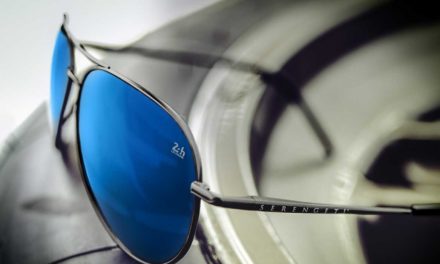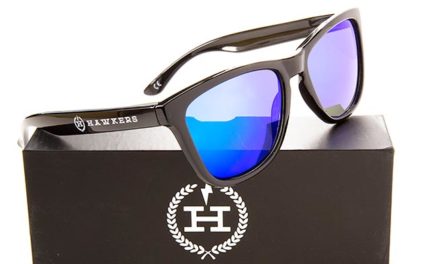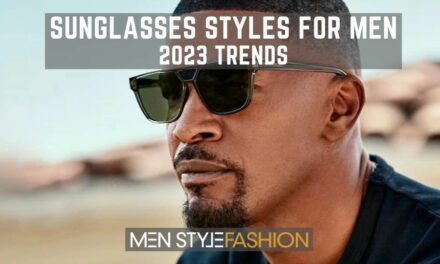The perfect balance between style and function, all in one single item which so often gets overlooked, season after season. If you’re planning on some new shades for summer, this guide contains 8 sunglasses tips to help you protect your eyes, your wallet and keep you looking fresh. Expert Author , Jamie Bartlett, co-founder of Banton Frameworks gives us his top tips!
Let’s get to it. Tips For Buying Sunglasses On & Offline

1.UV protection
Sunburnt skin is bad enough. But sunburnt eyes? No thanks. Let’s talk about the most important factor of any pair of sunglasses; UV protection. Regardless of their brand, style, shape or colour, your new shades must provide you with sufficient protection from the sun’s harmful rays. Always check for a UV40 or the UV400 rating which should either come with the frame via a label or be stated by the retail/e-commerce vendor. This means the lenses are capable of blocking UVA and UVB light which are the most damaging frequencies in the ultraviolet spectrum.
If there any sunglasses tips to remember, this is the most crucial.

2. Tint darkness
Let me save your eyes and bust one of the most common sunglasses myths for you. A darker lens doesn’t equal more UV protection.
But why? Sun lenses are tinted to reduce the amount of visible light that passes through the lens. But visible light isn’t the same as UV light because visible light is visible and UV light isn’t. So a really dark sun lens might seem more protective because it’s so dark to look through, but without UV protection, your eyes can still get hammered with UV light. Here’s the ironic part. Your pupils dilate behind a dark lens to let more light in, but in-turn, they simultaneously let more UV light in too.
Revert to tip No.1, always check for the UV400 label.

3. Lens Category
Did you know that some sunglasses are illegal for driving? Yep, they can be so dark they can inhibit your ability to see potential hazards, road signs or
traffic lights when you’re behind the wheel. Picking high quality sunglasses, look out for a category rating between 0,1,2,3 or 4 or a percentage called VLT. Most sunglasses will be rated between 3 and 4 (around 20% VLT) which is the most common tint darkness of the lens. Category 4 lenses are extremely dark and are illegal to wear in the UK for road-use. Lenses like these are for extreme-exposure scenarios such as high-altitude mountaineering. Category 0 and 1 provide very little tint which is basically a clear lens. Gradient tint sun lenses are also pretty common which graduate from a darker tint at the top of the lens to a light tint in the lower half of the lens. Tint darkness is your personal preference but most sunglasses frames will be a category 3 lens that is suitable for almost any situation. (Unless your tackling Everest this year.)
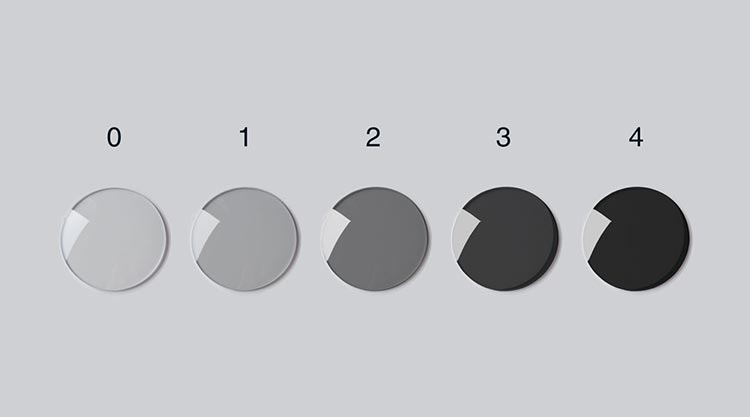
4. Lens Material
If you’re a traditionalist, you’ll be glad to know that glass sun lenses are optically supreme. They have the best ocular clarity which makes them super sharp to look through and give you a great visual definition of your day in the sun. Trouble is, they’re also super sharp when they shatter. It goes without saying, is the main
risk of lenses made from glass. (We’ve all seen the cartoons.) Nowadays, most fashion sun lenses are made from CR39 resin. They’re a close contender
to glass ones but will make your frame much, much lighter in weight. Post-purchase, you could always opt to have your lenses swapped. If you want to upgrade
to a different lens material, want additional coatings or even have them in your optical prescription, your best bet is to visit your local optician. Be aware that not all opticians are willing to work with frames bought elsewhere. To avoid any awkward conversation, my advice is to call ahead and ask if they’ll handle your ‘foreign
frame’ before you make your visit.
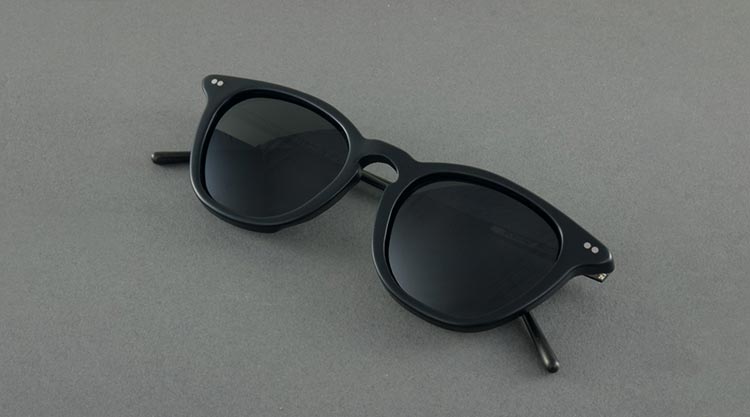
5. Anti-reflective coating
This might sound weird, but good quality sun lenses can use a coating which actually let more light pass through. Let me explain. Fashion sunglasses like the classic Wayfarer are quite exposed from above and from the sides of the frame. It sure looks fashionable, but this frame style is prone to letting in light from behind the lens.
An anti-reflective (AR) lens coating prevents this “light leak” from bouncing into your eyes from the rear-side of the lens. Which is great as is prevents you from seeing your own eyes and reduces eye fatigue from reflected rearward sunlight. Some AR coatings are coloured which makes them easy to detect in the shop. Online, check
with the vendor to see if the lens specifications feature any rear surface coatings. *Pssssst, anti-reflective is the same as anti-glare. Oh, and this coating has nothing to do with polarisation.
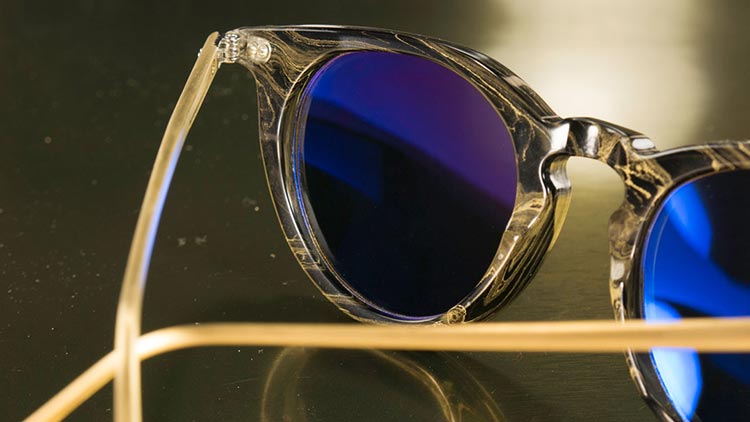
6. Polarisation
Possibly one of the most underexplained and confused topics of sunglasses. Polarised lenses still protect your eyes from UV light like regular sun lenses. But they also
contain a layer within the lens that blocks reflected sunlight otherwise known as glare. Without getting too scientific, glare is when sunlight reflects off horizontal surfaces like water or snow. It becomes condensed and re-orientated into horizontal light which is blindingly painful to look into. Compared to regular sun lenses, polarised lenses block nearly all of this glare. They’ll give you a much clearer view, greater ocular definition, heightened contrast and greater colour
perception. Heading to the beach or driving on wet shiny roads, you can reduce visual fatigue with polarised sunglasses over the course of the day.
No headaches for you!
Want to know more about polarised sunglasses?

7. Construction
High quality sunglasses are made using various high-quality materials and processes. But how do you spot them? Good quality, full rim sunglasses are usually always made from cellulose acetate. They’re cut and sculpted from sheet using multiple machining stages to make them smooth and comfortable to wear. Injected plastic frames are usually low-cost or for sporting applications. For fashion frames, avoid sunglasses with obvious “split lines” which indicate they’ve come from a mould.
Hinges are another way of assessing construction quality. Metal hinges which use rivets to secure them in place are a good sign of a high-quality
frame. If the hinge is secured into the frame with adhesive, these can easily work loose or break. Cheap sunglasses made with metal components may be made from nickel. If you have sensitive skin, look out for poorly metal-plated frames. Their coatings can wear off and irritate your nose where it makes contact with your skin.
Check with the retailer or online vendor about the materials used to make the frame. Try to avoid nickel plated parts and stick to hypoallergenic materials such as titanium and acetate.
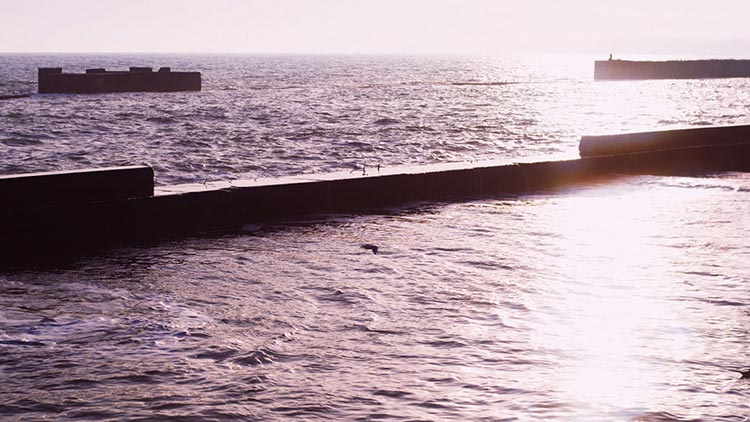
8. Frame Care
Investing in a good quality pair of sunglasses this summer, you’ll want to take care of your frame and lenses as best you can. Your new sunglasses should come with a protective hard-case to prevent the frame from being squashed. Impacts or compression can warp your frame, dislodge your lenses or
worse, completely shear the hinges. Always keep your sunglasses in their hard case when you aren’t wearing them. If you don’t
have a case, you really should buy one. And please, don’t be that person who put’s their frame lens-side down. If there’s one way of ruining your lenses, that would be it.
Other sunglasses threats include hairspray, sand, saltwater and abrasive cloths. Only use a lens cloth for dry wiping your lenses. For deep-cleaning, dip your frame into
some lukewarm water mixed with a mild detergent. Especially if you’ve been in the sea.
Sunglasses tips: conclusion
Approaching the nicer weather, I hope this guide comes in handy when you’re looking for your next pair of sunglasses. Year round, they’re crucial for protecting you from the sun preventing permanent damage to your eyes. To call them an accessory is something of an understatement so they’re definitely worth your money and your thoughtful consideration. Always check for proper UV400 protectivity regardless of lens material, additional coatings or polarisation.
Roll on summer.


